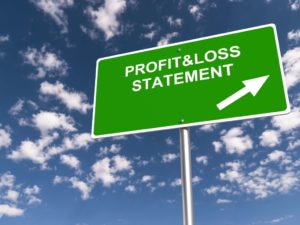
Now, there’s an extended version of the accounting equation that includes all of the elements (described adjusting entries in the section above) that comprise the Owner’s Equity. Although Coca-Cola and your local fitness center may be as different as chalk and cheese, they do have one thing in common – and that’s their accounting equation. It will guide you in understanding related accounting principles and provides a foundation that will help you solve many accounting problems.

Everything to Run Your Business
Income and expenses relate to the entity’s financial performance. Individual transactions which result in income and expenses being recorded will ultimately result in a profit or loss for the period. The term capital includes Food Truck Accounting the capital introduced by the business owner plus or minus any profits or losses made by the business. Profits retained in the business will increase capital and losses will decrease capital.

What are some common accounting decision-making models?

Since the balance sheet is founded on the principles of the accounting equation, this equation can also be said to be responsible for estimating the net worth of an entire company. The fundamental components of the accounting equation include the calculation of both company holdings and company debts; thus, it allows owners to gauge the total value of a firm’s assets. As business transactions take place, the values of the elements in the accounting equation change. The total change on the left side is always equal to the total change on the right. Thus, the resulting balances of both sides will always be equal.

What Is The Double-Entry Bookkeeping Method?
- The effect of recording in debit or credit depends upon the normal balance of the account debited or credited.
- After saving up money for a year, Ted decides it is time to officially start his business.
- As we previously mentioned, the accounting equation is the same for all businesses.
- The major and often largest value assets of most companies are that company’s machinery, buildings, and property.
Debt is a liability, whether it is a long-term loan or a bill that is due to be paid. Accounts receivable list the amounts of money owed to the company by its customers for the sale of its products. Assets include cash and cash equivalents or liquid assets, which may include Treasury bills and certificates of deposit (CDs). With Deskera you can automate other parts of the accounting cycle as well, such as managing inventory, sending invoices, handling payroll, and so much more. This formulation gives you a full visual representation of the relationship between the business’ main accounts.
- Some assets are tangible like cash while others are theoretical or intangible like goodwill or copyrights.
- The accounting equation will always balance because the dual aspect of accounting for income and expenses will result in equal increases or decreases to assets or liabilities.
- When A/R is paid, the amount paid is just transferred to cash.
- A useful tool for analyzing how transactions change an accounting equation is the T-account.
However, the effect of debits and credits on the balance in a T-account depends upon which side of the accounting equation an account is located. Journal entries often use the language of debits (DR) and credits (CR). A debit refers to an increase in an asset or a decrease in a liability or shareholders’ equity. A credit in contrast refers to a decrease in an asset or an increase in a liability or the accounting equation may be expressed as shareholders’ equity. Assets entail probable future economic benefits to the owner.
- The shareholders’ equity number is a company’s total assets minus its total liabilities.
- This makes sense when you think about it because liabilities and equity are essentially just sources of funding for companies to purchase assets.
- The accounting equation helps to assess whether the business transactions carried out by the company are being accurately reflected in its books and accounts.
- The cost of this sale will be the cost of the 10 units of inventory sold which is $250 (10 units x $25).
- Or in other words, it includes all things of value that are used to perform activities such as production and sales.
Company worth
- Other names for owner’s equity you may face are also net assets, or stockholder’s equity (for public corporations).
- All of our content is based on objective analysis, and the opinions are our own.
- Debits increase the left side of the equation (assets) or decrease the right side of the equation (liabilities and owner’s equity).
- These are assets that we’re going to expect to use for more than 1 year.
- If the left side of the accounting equation (total assets) increases or decreases, the right side (liabilities and equity) also changes in the same direction to balance the equation.
Essentially, the representation equates all uses of capital (assets) to all sources of capital, where debt capital leads to liabilities and equity capital leads to shareholders’ equity. Double-entry bookkeeping is a system that records transactions and their effects into journal entries, by debiting one account and crediting another. At first glance, you probably don’t see a big difference from the basic accounting equation.
